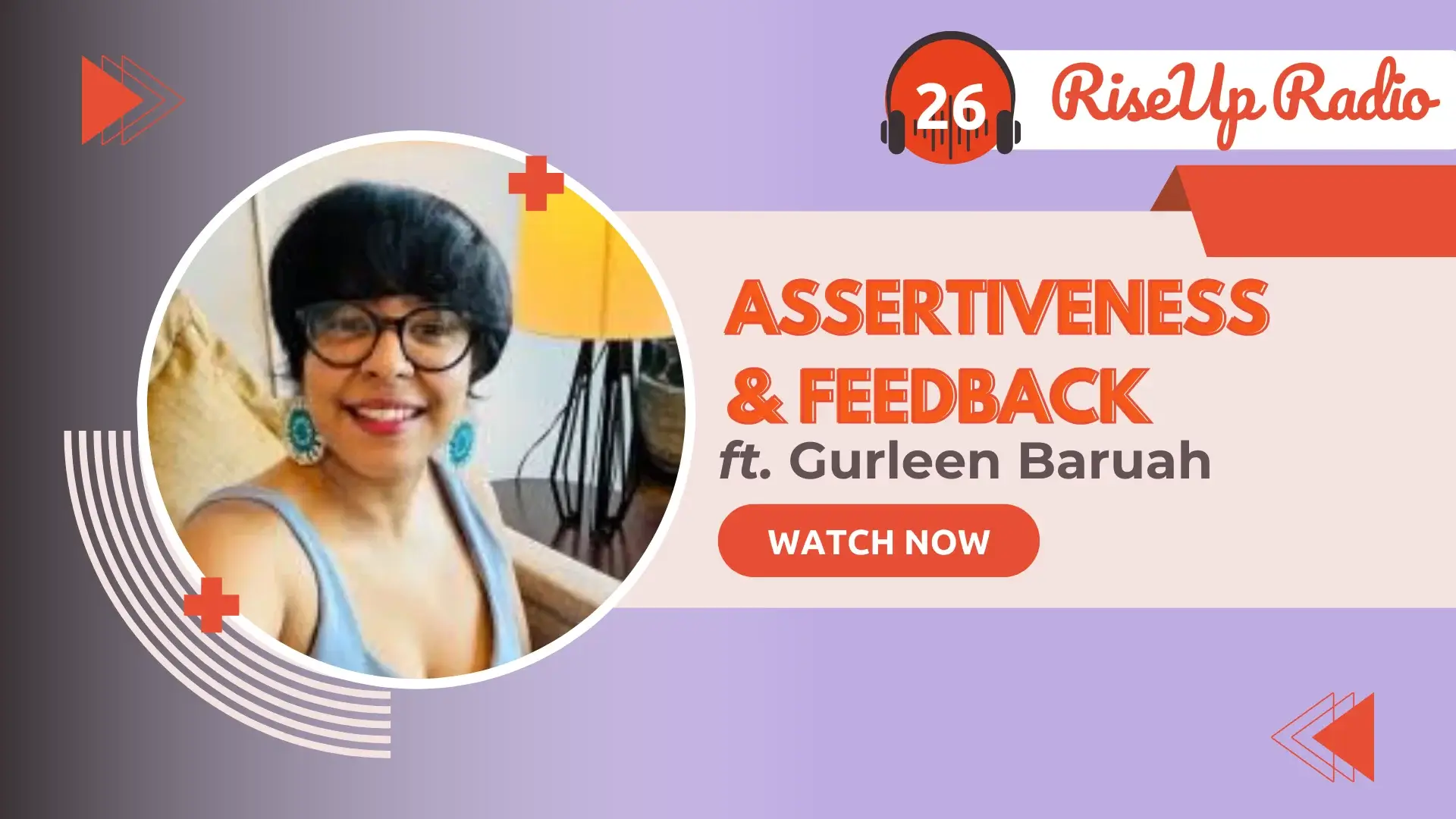How to Strengthen Workplace Learning with Learner Feedback?
With the ever-changing business environment, workplace learning is becoming increasingly essential to keep employees up-to-date and motivated. However, learning can only be meaningful if it resonates with the learners. That’s where learner feedback comes in. This post will delve into how you can use learner feedback to strengthen your workplace learning programs. We’ll explore the benefits of collecting learner feedback, how to manage it effectively, and what to do with it once you have it. Lastly, we’ll look at common challenges in collecting and using learner feedback and how to overcome them. By the end of this post, you’ll be equipped with all the tools you need to create a culture of continuous improvement in your workplace learning programs.How can learner feedback improve workplace learning?
Learner feedback is a process of gathering information from students or learners about their experiences and perceptions related to a particular learning activity, course, or program. Learner feedback is critical to workplace learning because it provides valuable insights into how employees engage with the training materials and what areas may need improvement. By gathering learner feedback, organizations can identify areas where training is particularly effective or ineffective and use that information to make targeted improvements. Some ways in which learner feedback can improve workplace learning include:- Identifying gaps in knowledge: Learner feedback can help identify areas where employees feel they need additional support or resources to understand a topic better.
- Improving engagement: Feedback from learners can help organizations understand how well their training materials are resonating with employees and identify ways to make them more engaging and relevant.
- Enhancing retention: By understanding what aspects of the training are most memorable for learners, organizations can focus on reinforcing those concepts and improving overall retention.
- Tailoring content: Based on learner feedback, organizations can adjust their training materials to better align with their audience’s needs, whether trimming unnecessary content or adding more detail on specific topics.
How to collect learner feedback?
Collecting learner feedback is essential to improving any learning program’s effectiveness. There are several ways to collect feedback from learners, including:- Surveys: Surveys can be conducted online or in person, providing valuable insights into how learners perceive the course content, delivery, and overall experience.
- Focus groups: Focus groups allow you to gather a small group of learners to discuss their experiences and provide feedback. It can be beneficial for identifying development needs or gathering more in-depth feedback.
- Interviews: One-on-one interviews with learners can provide more detailed and personalized feedback, allowing you to understand individual perspectives and needs better.
- Observation: Observing learners as they engage with the course material can help you identify areas that need improvement and gain insights into how learners interact with the content.
- Feedback forms: Providing learners with a feedback form at the end of each lesson or module can help you gather quick and easy feedback on specific topics or aspects of the course.
Other Interesting Reads
Using Rubrics for learner feedback
Rubrics are a great way to gather learner feedback by giving positive and critical feedback on a student’s work. Rubrics are used in education to assess and evaluate student work based on predetermined criteria. Rubrics can grade assignments, projects, presentations, or other learning work. They typically include a set of descriptors that define what is expected at each level of achievement, from excellent to poor. Rubrics make the grading process more objective and transparent by providing clear guidelines for assessment and feedback. Incorporating rubrics as part of the feedback process can encourage ongoing feedback, employee engagement, development, and retention.The importance of real-time feedback
Continuous feedback is critical for successful workplace learning. Incorporating real-time feedback is essential as it promptly identifies mistakes for learners to correct, boosting their motivation by acknowledging that they are on the right track. It also provides opportunities for reflection and improvement while allowing trainers to pinpoint areas of weakness in training programs. By receiving feedback in real-time, people can quickly identify areas where they need to improve and take corrective action before problems become more significant. Real-time feedback also helps to increase motivation and engagement by providing a sense of accomplishment and progress towards goals. Additionally, real-time feedback can lead to better decision-making by providing up-to-date information that can be used to inform strategic planning and operational decisions. Overall, the importance of real-time feedback lies in its ability to enable continuous improvement and drive better outcomes over time. Gathering anonymous feedback can provide honest insights for better employee engagement and development while enhancing retention.The growth mindset approach to learner feedback
A growth mindset can be beneficial for learning because it encourages individuals to view challenges and mistakes as opportunities for growth and improvement, rather than setbacks or failures. When someone has a growth mindset, they believe that their abilities and intelligence can be developed over time through hard work, dedication, and a willingness to learn. This mindset can help learners embrace challenges, seek out feedback and constructive criticism, and persist in the face of obstacles. Rubrics and quizzes are great assessments that can be used to give regular higher-level feedback comments on the student’s work without discouraging them. Fostering a growth mindset approach to feedback can lead to higher employee engagement and development levels. Learner feedback is an excellent way for organizations to gather insights into what training programs work best for their workforce. A growth mindset brings all these ideas together and keeps a team going despite challenges. Read more about this here: 5 Tips on Creating a Growth Mindset Culture in TeamsCommon challenges in collecting and using learner feedback
Collecting and utilizing learner feedback can be challenging due to several factors. These include inadequate participation levels, poorly worded or confusing questions leading to inaccurate feedback, and focusing on specific aspects of learning alone instead of considering every area of importance. Moreover, more than relying on learner feedback can limit program effectiveness.Overcoming bias in feedback collection
Collecting effective learner feedback is a critical element of enhancing training programs. Overcoming bias is crucial when gathering employee feedback to boost employee engagement and development. Honesty and openness are vital in the kind of feedback gathering that promotes a growth mindset approach toward learning. Anonymous surveys or multiple channels for gathering honest feedback, like email or chat, assist in reducing bias. Technology aids in automating the feedback process while ensuring confidentiality. Regular review and analysis of different types of feedback can provide higher-level insights into the program’s effectiveness.Addressing resistance to feedback
Creating an open communication and trust culture is a great way to address resistance to learner feedback. Encouraging employees to provide constructive feedback regularly through check-ins, chats, or emails can boost employee engagement and development. Anonymous feedback can also help gather honest feedback from the workforce. In addition, providing training for managers on how to use different types of feedback, such as positive or critical comments, can improve the training program’s effectiveness. Read more here: The Top 8 Strategies for Overcoming Resistance to Learning at the WorkplaceHow to use learner feedback to enhance training programs?
In short, managers can use learner feedback to improve training programs in three simple steps:- Gather feedback from learners using surveys, focus groups, or one-on-one conversations.
- Analyze the feedback to identify areas of improvement and make necessary changes.
- Continuously gather feedback to ensure ongoing effectiveness and relevance.
Identifying areas of improvement
To enhance learner feedback and improve workplace learning outcomes, it is crucial to identify areas of improvement in the training program. Managers can achieve this by encouraging learners to provide constructive criticism and suggestions for improvement through various channels like surveys, focus groups, or one-on-one conversations. The feedback received needs to be analyzed carefully to identify areas of strength and weakness in the training program’s effectiveness. Based on this analysis, adjustments can be made to the curriculum or delivery methods. Incorporating learner feedback into workplace learning programs is critical for creating an engaging environment that fosters employee development and retention.Adapting training programs in response to feedback
It is critical to adapt training programs in response to learner feedback to enhance workplace learning effectively. Regularly gathering feedback via surveys or check-ins’ helps identify areas to improve the program’s effectiveness. Making necessary changes or adjustments based on constructive feedback can lead to employee engagement and the development of new skills. Additionally, ongoing feedback processes like quizzes or chats can provide immediate real-time positive or critical feedback on past performance, enabling higher levels of retention and mastery. Managers can also use training program evaluation surveys for this.Ensuring feedback is actionable and effective
To effectively ensure learner feedback is actionable and delivers effective results, there are several tips you should keep in mind. One helpful way to gather feedback is by utilizing an anonymous chat or email system that allows employees to provide honest feedback regularly. Additionally, make sure to offer various types of feedback, such as quizzes or check-ins, that would enable employees to measure their progress and identify areas of improvement. You can help foster a growth mindset for your workforce by providing ongoing feedback that focuses on past performance and new skill development. Remember to use rubrics or other forms of positive reinforcement when offering critical feedback so that employees clearly understand what they need to work on to improve. Using these tactics can increase employee engagement and retention while enhancing your training program’s effectiveness.Conclusion
Learner feedback is an essential aspect of workplace learning. It helps identify areas of improvement, enhances training programs, and promotes a growth mindset approach to feedback. Real-time feedback and rubrics are some great examples of collecting learner feedback. However, there can be challenges in collecting and using feedback effectively, such as bias and resistance. Overcoming these challenges requires creating a culture of openness and trust. Ultimately, the goal is to use learner feedback to enhance workplace learning and create a more productive and engaged workforce.Can you conduct effective one-on-one meetings understand your team’s learning needs?
Evaluate the effectiveness of your one-on-one meetings with the help of a free assessment for managers.
What is learner feedback?
Learner feedback is information provided to learners regarding their progress, performance, and areas for improvement in a learning context. To write feedback for a learner, be specific, constructive, and focused on the learning objectives. Positive feedback to learners highlights their strengths, acknowledges achievements, and encourages continued effort and growth.
How do you write feedback for a learner?
When writing feedback for a learner, it is important to be specific, objective, and provide actionable suggestions for improvement. At times, the team members would be confused and managers may need to show direction for the learning program.
What is positive feedback to learners?
Positive feedback to learners highlights their strengths, acknowledges achievements, and encourages continued effort and growth. It can be instrumental in ensuring high levels of motivation and continuous participation in learning and development efforts.
Other Related Blogs
Assertive Feedback Techniques ft. Gurleen Baruah
Assertive Feedback Techniques ft. Gurleen Baruah Let’s be real—giving feedback as a manager isn’t always easy. Say too little, and nothing changes. Say too much, and it might come off…
How to ask for feedback from employees? | Gurleen Baruah
How to ask for feedback from employees? | Gurleen Baruah Feedback is a two way street. This podcast took managers on a trip down the other side. As managers, we…
Let’s Reverse the Gaze of Radical Candor?
Let’s Reverse the Gaze of Radical Candor? Have you heard about Radical Candor? It’s a book by Kim Scott that first came out in 2017. The tagline is “Caring Personally…
How To Become A Leadership Coach In 5 Steps
How To Become A Leadership Coach In 5 Steps Becoming a leadership coach is a fulfilling and rewarding career path for those who are passionate about helping others develop their…


